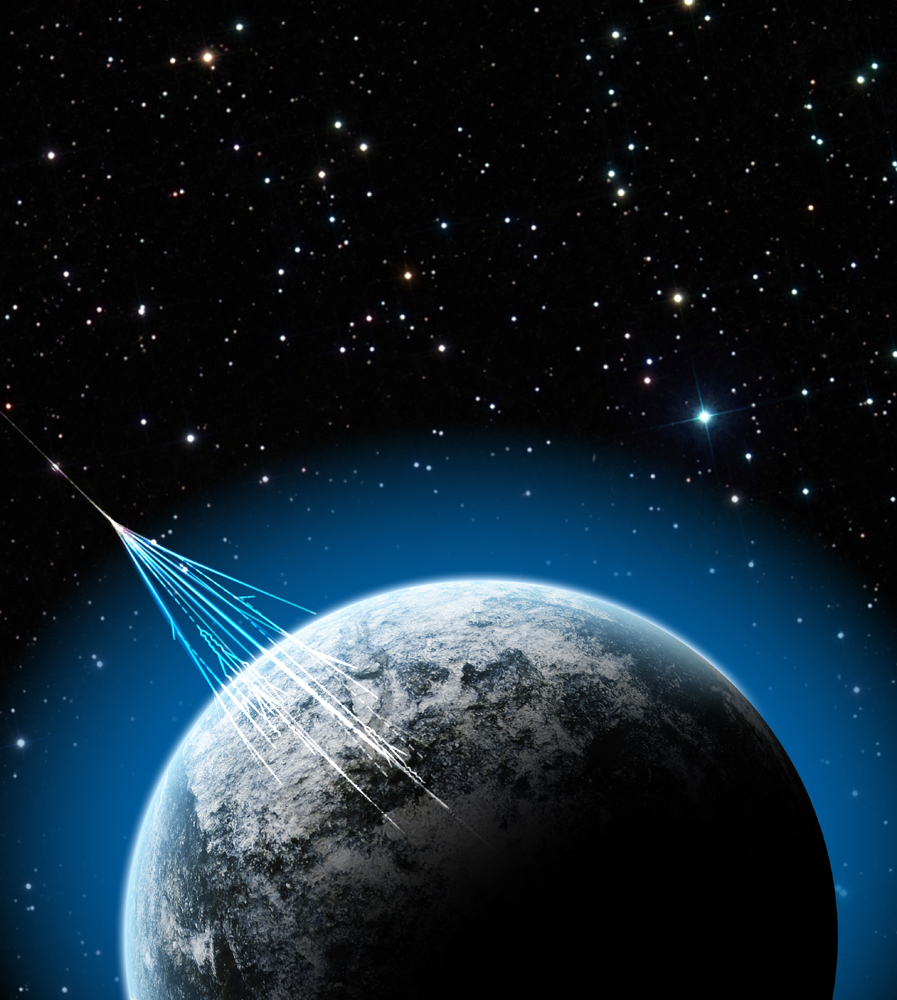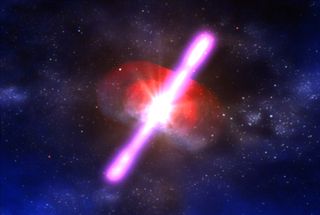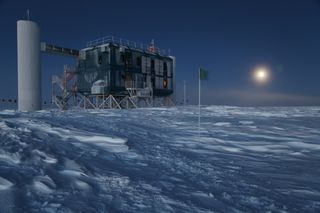Mysterious Cosmic Rays Leave Scientists in the Dark

The mystery of the origin of the strongest cosmic rays has deepened as new clues into key suspects, the most powerful explosions in the universe, suggest they are likely not potential culprits, researchers say.
Cosmic rays are charged subatomic particles that streak to Earth from deep in outer space. A few rare cosmic rays are extraordinarily powerful, with energies up to 100 million times greater than any attained by human-made particle colliders, such as CERN's Large Hadron Collider. The sources of these cosmic rays are a mystery.
"Nature is capable of accelerating elementary particles to macroscopic energies," said study co-author Francis Halzen at the University of Wisconsin-Madison, principal investigator at the IceCube Neutrino Observatory, a massive telescope designed to find the tiny subatomic particles. "There are basically only two ideas on how she does this — in gravitationally driven particle flows near the supermassive black holes at the centers of active galaxies, and in the collapse of stars to a black hole, seen by astronomers as gamma-ray bursts."
The prime suspect

Gamma-ray bursts are the most powerful explosions in the universe. They can emit as much energy as our sun during its entire 10-billion-year lifetime in anywhere from milliseconds to minutes.
"Some gamma-ray bursts are thought to be collapses of supermassive stars — hypernovas — while others are thought to be collisions of black holes with other black holes or neutron stars," said study co-author Spencer Klein of the U.S. Department of Energy's Lawrence Berkeley National Laboratory. "Both types produce brief but intense blasts of radiation."
New evidence may now rule out gamma-ray bursts as sources of these ultra-high-energy cosmic rays.
Get the Space.com Newsletter
Breaking space news, the latest updates on rocket launches, skywatching events and more!
Researchers employed the IceCube neutrino detector, an array of thousands of detectors encompassing a cubic kilometer of clear Antarctic ice at the South Pole. Neutrinos are ghostly particles that often pass right through matter, only rarely striking atoms.
"This is a coming-of-age for neutrino astronomy — the first time we're able to use neutrino data as a new way of looking at astrophysical objects and say something substantive about them," said study co-author Nathan Whitehorn, a physicist at the University of Wisconsin-Madison, who led the recent gamma-ray burst research with Peter Redl of the University of Maryland.
Evidence points elsewhere
The investigators focused on neutrinos whose energy levels suggest they are linked with gamma-ray bursts. The fireballs that give rise to the gamma rays seen in gamma-ray bursts were thought to potentially hurl particles at very high energies, generating both cosmic rays and energetic neutrinos.

After analyzing data on 307 gamma-ray bursts in 2008 and 2009, the scientists discovered the levels of these neutrinos were at least 3.7 times lower than expected. This suggests gamma-ray bursts are probably not the sources of the most powerful cosmic rays.
"After observing gamma-ray bursts for two years, we have not detected the telltale neutrinos for cosmic-ray acceleration," Halzen said.
Still, it could be that current models of neutrino production from these events might be off.
"We're not entirely clear yet as to what this neutrino flux we're not seeing might mean," Whitehorn told SPACE.com. "Our understanding of gamma-ray bursts is not complete — there's a lot of theoretical uncertainty. I suspect what will happen now is that there'll be a lot of efforts in the theory community of how to get neutrino fluxes compatible with the results."
Instead of gamma-ray bursts, researchers note that black holes at the centers or nuclei of active galaxies may be responsible for these ultra-high-energy cosmic rays, sucking in matter and spitting out enormous particle jets as they gorge.
"Active galactic nuclei are big — great big accelerators that may be able to accelerate particles to very high energies," said Klein, a long-time member of the IceCube Collaboration.
IceCube has looked for neutrinos from active galactic nuclei, but as yet the data is inconclusive.
The scientists detailed their findings in tomorrow's (April 19) issue of the journal Nature.
Follow SPACE.com for the latest in space science and exploration news on Twitter @Spacedotcom and on Facebook.
Join our Space Forums to keep talking space on the latest missions, night sky and more! And if you have a news tip, correction or comment, let us know at: community@space.com.

Charles Q. Choi is a contributing writer for Space.com and Live Science. He covers all things human origins and astronomy as well as physics, animals and general science topics. Charles has a Master of Arts degree from the University of Missouri-Columbia, School of Journalism and a Bachelor of Arts degree from the University of South Florida. Charles has visited every continent on Earth, drinking rancid yak butter tea in Lhasa, snorkeling with sea lions in the Galapagos and even climbing an iceberg in Antarctica. Visit him at http://www.sciwriter.us